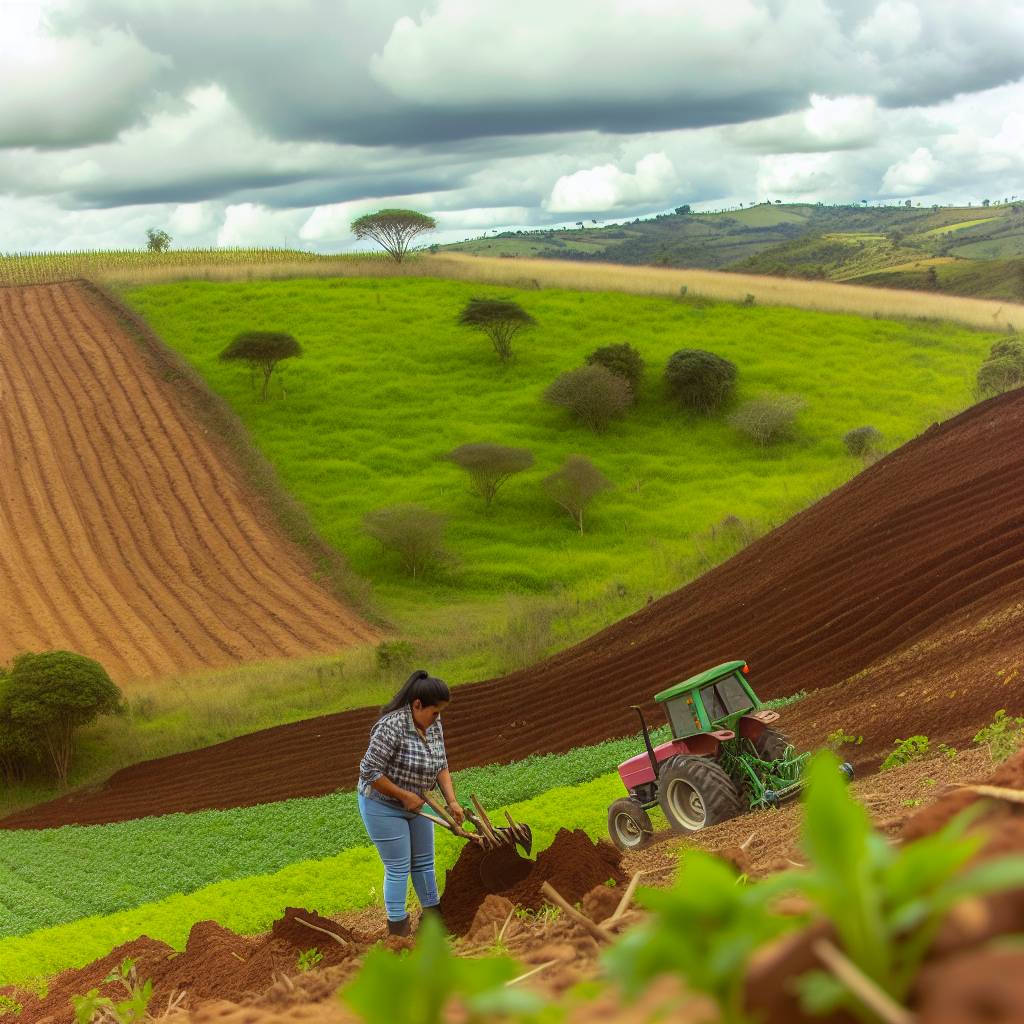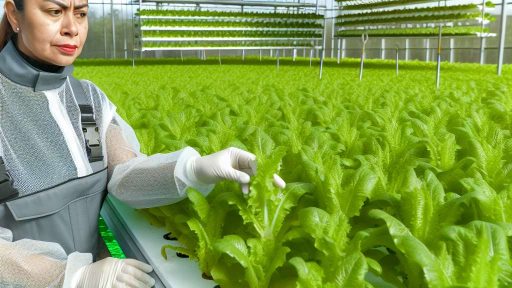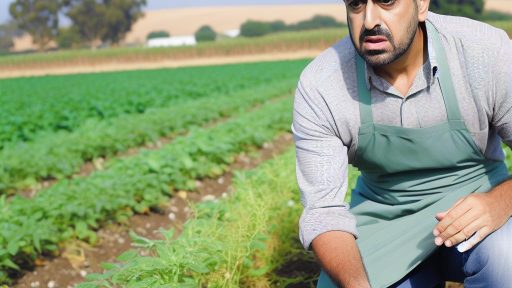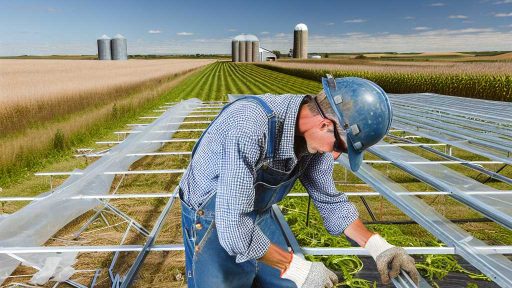Introduction to Soil Conservation
Importance for Sustainable Agriculture
Soil conservation plays a vital role in sustainable agriculture.
Healthy soil supports crop growth and biodiversity.
Moreover, it helps maintain ecosystem balance.
This practice reduces erosion and nutrient loss.
Farmers employing soil conservation techniques can enhance yields.
Additionally, it ensures the longevity of farmland.
Soil conservation also mitigates the effects of climate change.
It helps retain moisture, benefiting crops during dry seasons.
Furthermore, healthy soil captures and stores carbon.
This process contributes to a healthier environment.
Understanding Soil Health
Soil health is foundational to productive farming.
It involves the physical, chemical, and biological properties of soil.
Improving soil health leads to better nutrient availability.
Healthy soil structure enhances water infiltration.
Consequently, this reduces runoff and soil erosion.
Transform Your Agribusiness
Unlock your farm's potential with expert advice tailored to your needs. Get actionable steps that drive real results.
Get StartedEconomic Benefits of Soil Conservation
Investing in soil conservation brings financial advantages.
For instance, improved soil health increases crop productivity.
Higher yields can lead to increased profits for farmers.
Additionally, conservation practices often lower input costs.
Farmers may spend less on fertilizers and irrigation.
Moreover, sustainable practices often attract eco-conscious consumers.
Community and Environmental Impact
Soil conservation benefits not only farmers but entire communities.
Healthy soils support local food systems and economies.
Furthermore, they contribute to cleaner water sources.
By reducing runoff, they minimize pollution.
This helps protect aquatic ecosystems and biodiversity.
Understanding Soil Erosion: Causes and Consequences
Defining Soil Erosion
Soi lero sion refers to the removal of the top layer of soil.
This process is primarily caused by wind, water, or human activities.
Consequently, it leads to diminished soil quality.
Causes of Soil Erosion
Natural factors contribute significantly to soil erosion.
Heavy rainfall can wash away topsoil quickly.
Wind can carry fine particles over long distances.
Moreover, deforestation disrupts the soil’s protective cover.
Human practices also exacerbate erosion.
For example, intensive farming removes essential vegetation.
Inappropriate agricultural techniques further degrade soil integrity.
Consequences of Soil Erosion
The effects of soil erosion are far-reaching.
First, it reduces agricultural productivity.
Crops struggle to thrive in eroded soil conditions.
Showcase Your Farming Business
Publish your professional farming services profile on our blog for a one-time fee of $200 and reach a dedicated audience of farmers and agribusiness owners.
Publish Your ProfileAdditionally, water quality can suffer due to sediment runoff.
This runoff can contaminate rivers and lakes.
Ultimately, soil erosion threatens food security on a global scale.
It can lead to the loss of biodiversity in local ecosystems.
Addressing Soil Erosion
To combat soil erosion, we can implement various techniques.
Practicing crop rotation helps maintain soil structure.
Cover crops can shield the soil from direct rainfall.
Using contour plowing can minimize runoff on slopes.
Ultimately, adopting sustainable practices protects our farmland.
Cover Crops: Benefits and Techniques for Soil Health
Importance of Cover Crops
Cover crops play a vital role in soil conservation.
They enhance soil fertility and health through various mechanisms.
Moreover, these crops reduce soil erosion during non-growing seasons.
In addition, cover crops suppress weed growth effectively.
Their root systems improve soil structure and aeration.
Types of Cover Crops
Several types of cover crops exist, each with unique benefits.
Leguminous cover crops like clover fix nitrogen in the soil.
Grasses such as rye provide excellent ground cover.
Brassicas, including radishes, help break up compacted layers.
Choosing the right type depends on specific farming goals.
Benefits of Implementing Cover Crops
- Improve soil health and fertility.
- Enhance moisture retention in dry periods.
- Reduce runoff and nutrient leaching.
- Increase biodiversity in agricultural systems.
Farmers report higher yields after using cover crops.
Additionally, they often experience reduced fertilizer costs.
Techniques for Effective Use of Cover Crops
Proper management is crucial for maximizing cover crop benefits.
Farmers should time the planting and termination of cover crops precisely.
Incorporating cover crops into crop rotation enhances productivity.
Furthermore, using mixed species can diversify benefits.
Challenges in Cover Crop Implementation
Despite their advantages, cover crops come with challenges.
Initial establishment may require additional management resources.
Moreover, some farmers fear competition with cash crops.
Addressing these concerns involves proper planning and education.
Case Studies of Successful Cover Crop Use
Many farmers have successfully integrated cover crops into their systems.
For instance, Emily Harvester increased soil organic matter by using clover.
Similarly, Rodrigo Fields reported less erosion with rye cover crops.
These examples highlight the potential benefits of cover crops.
Learn More: Bridging Precision Agriculture And Real Estate A New Approach To Crop Management
Crop Rotation: Enhancing Soil Fertility and Structure
Benefits of Crop Rotation
Crop rotation improves soil fertility over time.
This technique helps maintain balanced nutrient levels.
By alternating different crops, we can reduce soil depletion.
Additionally, it minimizes pest and disease cycles.
Crop rotation can lead to more resilient agricultural systems.
Farmers often see improved yields with this strategy.
Showcase Your Farming Business
Publish your professional farming services profile on our blog for a one-time fee of $200 and reach a dedicated audience of farmers and agribusiness owners.
Publish Your ProfileHow to Implement Crop Rotation
Start by planning a rotation schedule based on your crops.
Include a variety of legumes, grains, and root vegetables.
Next, monitor soil health regularly.
This ensures that nutrient levels stay optimal.
Consider integrating cover crops during off-seasons.
Cover crops help with soil structure and erosion control.
Recommended Crop Rotation Patterns
Rotation patterns can vary based on climate and soil types.
A common approach is the three-crop rotation.
- Plant legumes first to fix nitrogen.
- Follow with cereals to utilize nitrogen efficiently.
- Conclude with root vegetables to enhance soil texture.
Another option is the four-year cycle.
- Year one: legumes
- Year two: grains
- Year three: brassicas
- Year four: root crops
Challenges and Solutions
One challenge is planning crop diversity.
Farmers may find it difficult to choose compatible crops.
Consult with agronomists for tailored advice.
Additionally, manage crop residue effectively.
This can attract pests if not properly handled.
Lastly, educate yourself on crop rotation benefits.
Knowledge can foster better adoption of this technique.
Discover More: Greenhouse Cultivation for Real Estate Investors
Reduced Tillage: Methods and Effects on Soil Conservation
Introduction to Reduced Tillage
Reduced tillage practices play a vital role in soil conservation.
These methods minimize soil disruption and maintain its structure.
Farmers have embraced reduced tillage to enhance sustainability.
Methods of Reduced Tillage
Several methods effectively implement reduced tillage.
No-till planting is a popular choice among many farmers.
This method involves planting directly into undisturbed soil.
Conservation tillage also limits disturbance while allowing some soil preparation.
Strip tillage combines no-till and conventional tillage techniques.
Farmers often use cover crops as part of their reduced tillage strategy.
These crops improve soil health and reduce erosion.
Effects on Soil Conservation
Reduced tillage significantly impacts soil conservation positively.
It improves soil structure by increasing organic matter content.
This enhancement leads to better water retention in the soil.
Consequently, farmers experience reduced runoff and erosion.
Furthermore, reduced tillage promotes soil biodiversity.
Diverse soil organisms enhance nutrient cycling and plant health.
Challenges and Considerations
Despite its benefits, reduced tillage presents challenges.
Farmers must adapt their weed management strategies accordingly.
Additionally, they must monitor soil compaction levels closely.
Choosing the right equipment is crucial for successful implementation.
Collaboration with agricultural experts can ease these challenges.
See Related Content: Crop Disease Management for Protecting Agricultural Land Value
Agroforestry: Integrating Trees for Enhanced Soil Stability
Overview of Agroforestry
Agroforestry combines agriculture and forestry practices.
Showcase Your Farming Business
Publish your professional farming services profile on our blog for a one-time fee of $200 and reach a dedicated audience of farmers and agribusiness owners.
Publish Your ProfileThis technique provides multiple benefits to farmland.
It enhances soil stability and promotes biodiversity.
Farmers can utilize various tree species in their fields.
Ultimately, agroforestry improves land productivity.
Benefits of Trees in Agriculture
Trees contribute significantly to soil health.
They prevent erosion by stabilizing the soil.
Roots bind the soil, reducing surface runoff.
Additionally, trees improve water retention in the ground.
They also provide shade, benefiting crops growing below.
Enhancing Biodiversity
Diverse tree species foster a variety of organisms.
This diversity helps in pest control naturally.
Healthy ecosystems lead to improved crop yields.
Furthermore, many trees provide habitats for wildlife.
This coexistence promotes ecological balance on farms.
Different Agroforestry Systems
There are several agroforestry systems available to farmers.
- Alley cropping involves planting trees alongside crops.
- Silvopasture integrates trees with pastureland for livestock.
- Forest farming allows for the cultivation of shade-loving plants.
Each system has unique advantages for sustainable farming.
Implementing Agroforestry Practices
Farmers should start by selecting suitable tree species.
Local climate and soil conditions are crucial factors.
Next, proper planning and layout enhance effectiveness.
Maintenance practices such as pruning are essential.
Over time, farmers will see improved soil health.
Examples of Successful Implementation
Many farmers worldwide have adopted agroforestry.
In Brazil, smallholders benefit from integrated systems.
They use native trees to enhance crop yields.
In India, farmers combine fruit trees with rice paddies.
These practices lead to sustainable farming benefits.
Learn More: Smart Irrigation Methods for Sustainable Crop Cultivation on Land

Terracing: Effective Landforms to Reduce Soil Loss on Slopes
Introduction to Terracing
Terracing is a popular technique used in agriculture.
It transforms sloped land into a series of flat, stepped surfaces.
This method effectively reduces soil erosion and runoff.
Benefits of Terracing
Terracing offers multiple advantages for sustainable farming practices.
First, it conserves soil and moisture on inclined terrains.
Moreover, it helps manage rainfall more efficiently.
In addition, terracing increases agricultural productivity over time.
Types of Terracing
There are various types of terracing methods to consider.
- Flat terraces are designed with a level surface to intercept water.
- Stepped terraces utilize steps to create more usable land area.
- Contoured terraces follow the natural curve of the slope for optimal drainage.
Implementation Strategies
Implementing terracing requires careful planning and execution.
First, assess the land’s slope and soil type for effective design.
Next, create a detailed construction plan that includes spacing and height.
Additionally, consider plant selection to stabilize the terraces.
Maintenance of Terraces
Maintenance is crucial for the longevity and effectiveness of terraces.
Showcase Your Farming Business
Publish your professional farming services profile on our blog for a one-time fee of $200 and reach a dedicated audience of farmers and agribusiness owners.
Publish Your ProfileRegular inspections help identify signs of erosion or damage.
Furthermore, vegetation should be managed to prevent overgrowth.
Lastly, maintaining proper drainage ensures the terraces function optimally.
Mulching: Techniques and Benefits for Soil Moisture and Erosion Control
Understanding Mulching
Mulching is the practice of covering the soil surface.
This technique helps retain moisture in the soil.
Additionally, it reduces soil erosion caused by wind and water.
Furthermore, mulching improves soil fertility over time.
Types of Mulch
There are two main types of mulch: organic and inorganic.
Organic mulch includes materials like straw, wood chips, and leaves.
These materials decompose and enrich the soil as they break down.
Inorganic mulch consists of materials such as plastic and gravel.
These materials provide a longer-lasting solution for moisture retention.
Benefits of Mulching
Mulching offers several key benefits to farmers.
- It conserves soil moisture effectively.
- It suppresses weed growth efficiently.
- It provides a habitat for beneficial organisms.
- It regulates soil temperature, ensuring a stable environment.
How to Apply Mulch
Proper application of mulch ensures maximum benefits.
First, clear the area of weeds and debris.
Next, apply a layer of mulch about two to four inches thick.
Ensure the mulch covers the soil evenly without smothering plants.
Regularly check and replenish the mulch as needed.
Choosing the Right Mulch
Selecting the right type of mulch is crucial.
Consider the specific needs of your plants and soil type.
Organic mulch works well for vegetable gardens and flower beds.
Inorganic mulch may be better for areas with high foot traffic.
Common Mistakes to Avoid
Avoid using too much mulch, which can suffocate plants.
Do not apply mulch too close to the stems of plants.
Additionally, steer clear of using untreated wood chips, as they can harbor pests.
Implementing Soil Conservation Practices
Importance of Soil Conservation
Soyl conservation enhances agricultural sustainability.
It prevents soil degradation and maintains fertility.
Furthermore, it improves water retention and quality.
Cover Cropping
Cover cropping protects soil during off-seasons.
Leguminous plants enrich the soil with nitrogen.
Additionally, cover crops reduce erosion by wind and water.
- Choose diverse cover crops for better soil health.
- Rotate cover crops to disrupt pest cycles.
No-Till Farming
No-till farming preserves the soil structure.
This method enhances moisture retention and organic matter.
Moreover, it minimizes disturbance and erosion.
- Adopt no-till planting for corn and soybean.
- Use minimal tillage equipment to reduce soil compaction.
Contour Farming
Contour farming follows the natural landscape contours.
This practice helps reduce water runoff and soil loss.
In addition, it promotes effective water management.
- Create furrows along slopes to capture rainwater.
- Plant cover crops along contour lines for better stability.
Agroforestry
Agroforestry integrates trees into farming systems.
This approach increases biodiversity and ecosystem health.
Additionally, it improves soil structure and reduces erosion.
Showcase Your Farming Business
Publish your professional farming services profile on our blog for a one-time fee of $200 and reach a dedicated audience of farmers and agribusiness owners.
Publish Your Profile- Select native tree species for compatibility with crops.
- Establish windbreaks to protect crops from harsh winds.
Soil Amendments
Incorporate organic amendments like compost and manure.
These additions enhance soil fertility and structure.
Furthermore, they improve microbial activity and nutrient availability.
- Spread compost during the growing season for best results.
- Test soil regularly to track nutrient levels.
Water Management Practices
Effective water management conserves soil health.
Implementing drip irrigation optimizes water use.
Additionally, rainwater harvesting can support crops during dry spells.
- Collect runoff in storage tanks for irrigation.
- Use soil moisture sensors to schedule irrigation effectively.
Education and Community Involvement
Educate farmers about soil conservation techniques.
Engage local communities to form support networks.
Additionally, share success stories to inspire action.
- Organize workshops on soil management practices.
- Facilitate farmers’ field days to showcase results.
Future Directions in Soil Conservation for Sustainable Farming
Emerging Technologies
New technologies are revolutionizing soil conservation methods.
Precision agriculture tools provide real-time soil data.
Farmers can utilize drones for effective soil monitoring.
Additionally, soil sensors help optimize management practices.
Integrating Agroecology
Agroecology emphasizes biodiversity and ecological balance.
This approach integrates ecological principles into farming systems.
Practices include crop rotation, intercropping, and agroforestry.
Such methods enhance soil fertility and health sustainably.
Education and Training
Education plays a crucial role in soil conservation efforts.
Farmers need access to up-to-date information and training.
Workshops and extension services can provide valuable resources.
Collaboration with agricultural institutions fosters knowledge sharing.
Policy Support and Incentives
Effective policies are essential for advancing soil conservation.
Governments should create incentives for sustainable practices.
Financial support can encourage farmers to adopt new technologies.
Additionally, policies should promote research in soil health.
Community Engagement
Community involvement is vital for successful soil conservation.
Local organizations can raise awareness about the importance of soil health.
Collaborative efforts can lead to innovative solutions for challenges.
Furthermore, sharing success stories encourages broader adoption.
Next Steps for Soil Conservation
Future directions in soil conservation are promising.
With the right tools and practices, sustainability can thrive.
Ongoing support and innovation will ultimately shape our agricultural landscape.
Incorporating diverse strategies ensures the resilience of our soils.




